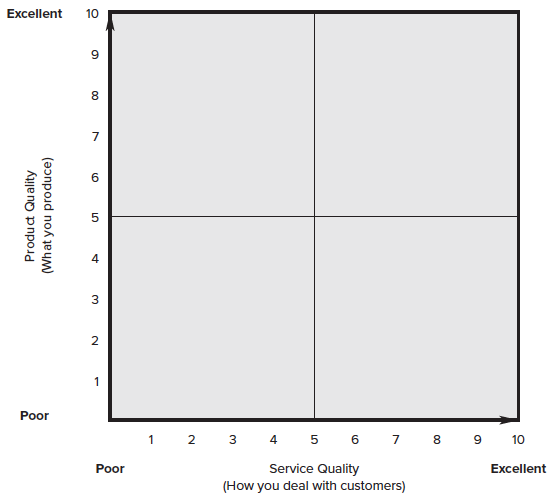Benchmarking Success
The leader who wants to improve the performance of his or her work group or organization can use benchmarking as a job aid in the leadership process.
Are you capitalizing on benchmarking as a leadership tool? The tasks of leadership are to interpret conditions, establish direction, mobilize followers, and develop people – all for the purpose of achieving organizational success. The leader who wants to improve the performance of his or her work group or organization can use benchmarking as a job aid in the leadership process. Southwest Airlines, for instance, studied auto-racing pit crews to learn how to reduce the turnaround time of its aircraft at each scheduled stop. Toyota managers got the idea for just-in-time inventory deliveries by looking at how U.S. supermarkets replenish their shelves.1
Benchmarking is a careful search for excellence – taking the absolute best as a standard and trying to surpass that standard. Great leaders are constantly in search of excellence, both personally and organizationally. Benchmarking begins with an objective evaluation of the organization against the very best. The goal is to determine what winners are doing, and then take steps to meet or exceed that high standard. To personalize the concept, complete the following exercise.
Benchmarking the Best2
Plot your organization (company, institution, etc.) on the performance graph below. Where are you today? Then plot your best competitors. Where are they? If your organization is not in the upper right corner, you are at risk. Your current performance is not satisfactory to the people who care about the work you do—customers, employees, owners, governing boards, and the like. What you must do is to take action to improve your performance record. An interesting variation is to have others who know and care about your organization provide this evaluation. Note that product quality includes elements such as fit, finish, beauty, reliability, and most important, functionality. Service quality includes timely delivery, response to questions and problems, courteous treatment, and consideration of customers’ needs.

An interesting example of performance excellence is Toyota at its best. A philosophy of excellence is described in Toyota’s Basic Management Handbook: “The only acceptable quality percentage is 100%. Every car must be manufactured exactly according to specifications. No Toyota vehicle should ever leave the factory without passing every quality test perfectly.” One can see the positive attitude, high standards, and uncompromising commitment of a business winner in Toyota’s mandate to leaders. Toyota believes the success of the company is determined by constant adherence to this high standard of work performance and if the company strays from the standard, dire consequences will result.3
In evaluating your organization, what improvements can be made to become (or remain) the best in your industry or market? What innovations should you make in product quality (what you produce) and service quality (how you deal with customers)? Be specific: Who should do what, when, where, how, and why?
Organization Improvement
How do organizations achieve greatness? There are many good paths. Organization development techniques include: job enrichment, management by objectives, survey feedback, top grading, team building, total quality management, succession planning, gainsharing, reengineering, performance management, action research, appreciative inquiry, balanced scorecard, knowledge management, coaching, Six Sigma, Lean, employee engagement, and behavior modification. All of these techniques are effective when they are understood, owned, worked, and supported by every level of the leadership pyramid—top executives, middle managers, and front-line supervisors.4
A study of 200 techniques employed by 160 companies over 10 years identified four success factors and management practices that lead to sustained and superior performance regardless of the technique used.5
Factors
|
Management Practices
|
Strategy
Execution
Culture
Structure |
Establish a direction, focus on customers, and communicate with employees.
Hire good people, delegate decision-making, and perform quality work.
Empower people, reward performance, and maintain strong core values.
Align resources, exchange information, and promote teamwork. |
Organizational success is a never-ending challenge. It’s a subject effective leaders continually address.
Turn the Ship Around
There are many examples of organizational improvement. One in the public sector has lessons for all sizes and types of organizations. The book Turn the Ship Around! by L. David Marquet is a story of renewal through empowerment aboard the nuclear-powered submarine USS Santa Fe. The ship was plagued by low morale, poor performance, and the worst retention rate in the fleet. Fundamental changes in technical competence and organizational clarity resulted in a 10-fold improvement in performance. The Santa Fe achieved excellence in operations, winning numerous Navy awards. Sailors who were previously told what to do were asked what they thought.
Competence was ensured through certification versus briefings. Decision-making authority was pushed down the chain of command. The result was an explosion of thinking and engagement, the enduring success of the ship, and the professional advancement of personnel. Officers and crew aboard the Sana Fe were promoted at significantly greater rates to higher leadership positions, including 10 nuclear-submarine captains and 6 major commanders, such as submarine squadron commander. By shifting the paradigm from leader-follower to leader-leader, people became leaders, and the ship showed it.
David Marquet describes the leader’s challenge: Empower people by giving control without allowing chaos. Chaos is bad on a nuclear submarine. He focused on two main pillars: technical competence and organizational clarity. When empowerment was supported by competence and clarity, the result was individual initiative, group unity, and tremendous performance. The USS Santa Fe nuclear-powered, fast-attack submarine went from worst to first in the U.S. Navy.6
For related reading, see:
Good to Great by James Collins
Ten Commandments of Business Failure by Donald Keough
1. R. Camp, Benchmarking (New York: Productivity Press, 2006): and “TR50 2010: The World’s Most Innovative Companies,” Technology Review (March-April 2010), pp.33-34.
2. T. Kinni, America’s Best (New York: Wiley, 1996); and A. Grove, Only the Paranoid survive (New York: Currency Doubleday, 1970).
3. J. Liker, The Toyota Way (New York: McGraw-Hill, 2004); and J. Liker, Toyota Culture (New York: McGraw-Hill, 2008).
4. D. Anderson, Organization Development (Thousand Oaks, CA: Sage, 2014): F. Luthans and C. Yousef, “Emerging Positive Organizational Behavior,” Journal of Management 33, no.3 (June 2007), pp.321-49; and A. Brahamson and M. Eisenman, “Employee Management Techniques,” Administrative Science Quarterly 53, no.4(2008), pp. 719-44. See also J. Brooks, Business Adventures (New York: Open Road Integrated media, 2014).
5. N. Nohria et al., “What Really Works,” Harvard Business Review (July 2003), pp. 42-52; P. Drucker, The Five Most Important Questions You Will Ever Ask about Your Organization (San Francisco: Jossey-Bass, 2008); and K. Weick and K. Sutcliffe, Managing the Unexpected (San Francisco: Jossey-Bass, 2015).
6. D. Marquet, Turn the Ship Around! (New York: Portfolio/Penguin, 2013); see also D. Abrashoff, It’s Your Ship (New York: Grand Central, 2012).


